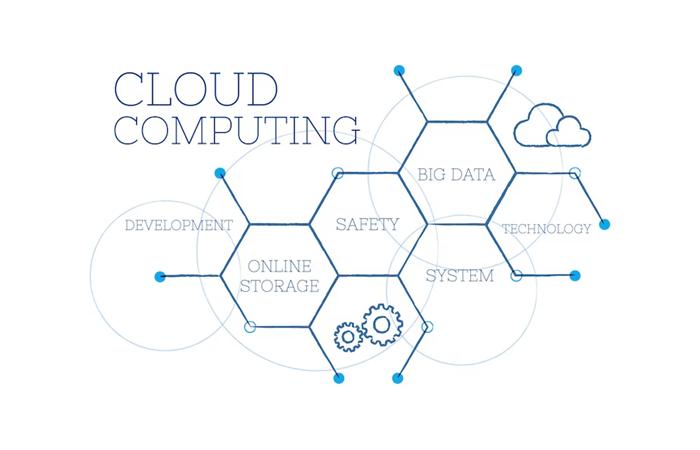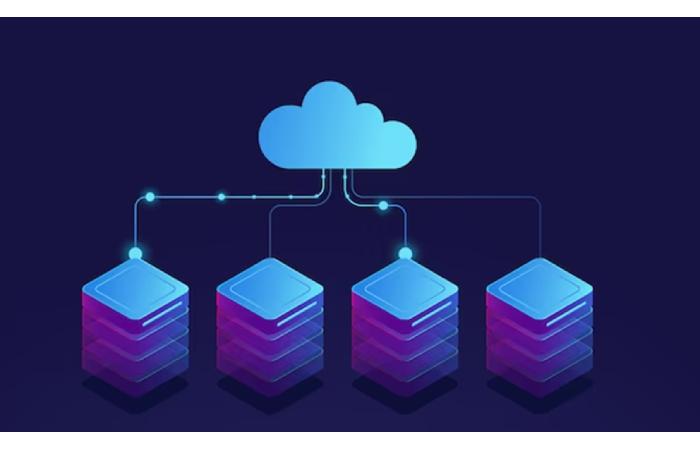Cloud computing has become an integral part of our modern digital landscape, revolutionizing the way businesses and individuals interact with technology. It has brought immense flexibility, scalability, and cost-efficiency to the world of computing. But behind the scenes, there’s a wizardry at play, and its name is virtualization.
Virtualization is a technology that allows you to create a virtual computer system or “virtual machine” (VM) on a physical computer. VMs are software computers that can run an operating system and applications just like a physical computer. However, VMs are not physically tied to the hardware of the physical computer they are running on. This means VMs can be moved from one physical computer to another without disrupting their operation.

Virtualization is used in cloud computing to allow multiple VMs to run on the same physical computer. This is known as server virtualization. Server virtualization can improve resource utilization and reduce costs, as it allows multiple VMs to share the same physical hardware
There are two main types of virtualization:
- Hardware virtualization: Hardware virtualization uses a hypervisor to create VMs. A hypervisor is a software layer that sits between the physical hardware and the VMs. The hypervisor manages the allocation of resources to the VMs and ensures that they are isolated from each other.
- Software virtualization: Software virtualization uses a software program to create VMs. The software program creates a virtual environment for the VM to run in. The VM is then isolated from the physical hardware and other VMs running on the same physical computer.
Table of Contents
Types of Virtualization in Cloud Computing
There are a number of different types of virtualization that can be used in cloud computing, let’s explore the various types, each with its unique set of magical tricks.

● Server virtualization
Server virtualization is the most widely used form of virtualization in cloud computing. Server virtualization allows multiple VMs to run on the same physical server.
It’s like having a magical hat that can pull out an unlimited number of rabbits. Each virtual server acts as an independent entity with its own operating system and applications. This type of virtualization is often used to maximize server utilization and reduce hardware costs.
● Network virtualization
Ever wanted to have a Harry Potter-style invisibility cloak for your network? Network virtualization comes close to that. It allows multiple virtual networks to be created on the same physical network. This allows for improved sharing of resources, keeping things separate when needed, and making it easier to grow as needed. You can have multiple virtual networks coexisting on the same physical hardware, each with its own set of rules and configurations. This can improve security and flexibility.
● Storage virtualization
Imagine having a magic wand that can combine all your scattered storage resources into one unified pool. That’s exactly what storage virtualization does. It abstracts physical storage devices and presents them as a single, manageable entity. This makes storage management easier, improves efficiency, and simplifies data migration.
● Desktop virtualization
Desktop virtualization is like a magician’s assistant – it brings the magic closer to the audience. It allows you to run multiple virtual desktops on a single physical machine. Each virtual desktop operates independently, giving users the illusion of having their own personal computer. It’s perfect for scenarios where you want to provide remote access to desktop environments or ensure security by isolating user sessions. This can improve security and flexibility.
● Application virtualization
Application virtualization allows users to run applications from a central server. This one’s like a magic trick that lets you run applications without installing them on your local machine. Application virtualization encapsulates applications and their dependencies into a virtual container. Users can then run these applications on their devices, regardless of the underlying operating system. It’s perfect for avoiding the infamous “DLL hell” and ensuring compatibility.
This can improve security and flexibility.
● Data virtualization
Data virtualization is like having a magic mirror that shows you a unified view of all your data, no matter where it’s stored. It abstracts data from various sources and presents it in a consistent format. This simplifies data integration, enhances data access, and makes data analytics a breeze.
Virtualization is a powerful technology that can be used to improve resource utilization, reduce costs, increase flexibility, and improve disaster recovery in cloud computing.
Here are some examples of how virtualization is used in cloud computing:
- Amazon Web Services (AWS) uses virtualization to power its Elastic Compute Cloud (EC2) service. EC2 allows users to create and manage VMs on AWS.
- Microsoft Azure uses virtualization to power its Virtual Machines service. Azure Virtual Machines allows users to create and manage VMs on Azure.
- Google Cloud Platform uses virtualization to power its Compute Engine service. Compute Engine allows users to create and manage VMs on Google Cloud Platform.
Virtualization serves as the cornerstone technology that unlocks the potential of cloud computing. By allowing multiple VMs to run on the same physical hardware, virtualization can help to improve resource utilization, reduce costs, increase flexibility, and improve disaster recovery in the cloud.
Benefits Of Virtualization in Cloud Computing
There are a number of benefits to using virtualization in cloud computing:
- Improved resource utilization: Virtualization can improve resource utilization by allowing multiple VMs to run on the same physical computer. This can reduce the number of physical servers that are required, which can save money on hardware costs.
- Reduced costs: Virtualization can help to reduce costs by reducing the number of physical servers that are required and by reducing the need for software licenses.
- Increased flexibility: Virtualization can help to increase flexibility by allowing VMs to be easily moved from one physical server to another. This can make it easier to scale applications up or down as needed.
- Improved disaster recovery: Virtualization can help to improve disaster recovery by making it easier to create backups of VMs and by making it easier to restore VMs to a previous state in the event of a disaster.
If you’re considering a career in cloud computing or seeking to enhance your existing skills, enrolling in a reputable Cloud Computing Training Course can provide you with in-depth knowledge of virtualization and its role in cloud environments. Such courses cover essential topics, including virtualization technologies, cloud service models, security, AWS, and best practices, ensuring that you are well-prepared to meet the demands of the ever-evolving cloud industry.
Conclusion
In the enchanting world of cloud computing, virtualization stands as the grand magician, weaving spells of efficiency, flexibility, and scalability. It allows us to make the most out of our digital resources, just as a magician makes the most of their bag of tricks.
As technology continues to evolve and new forms of virtualization emerge, we can only imagine the future possibilities. Virtualization will remain a cornerstone of the cloud, casting its spells to help us work, play, and innovate in the digital realm.
So, the next time you access a virtual machine in the cloud or spin up a container, remember that you’re partaking in a bit of technological magic, where reality and virtuality converge to create a world of endless possibilities. It’s a world where, with a touch of humor and a dash of creativity, even the most complex concepts become as accessible as pulling a rabbit out of a hat. Happy virtualizing!
Author Bio
Meet Meera Anand, a tech enthusiast and content creator. She loves making complicated tech stuff easy to understand. Meera’s great at explaining things like cloud computing, AWS Training, Cybersecurity, AI, Blockchain, Data Analytics and Engineering, Project Management, and ERP tools in simple words.

